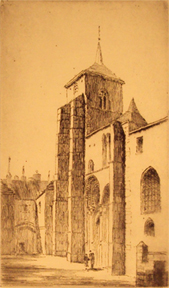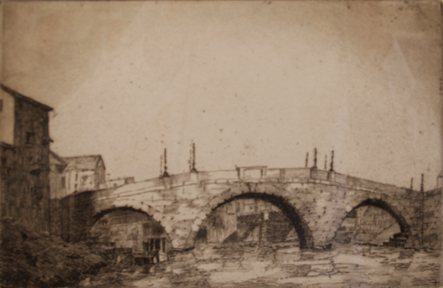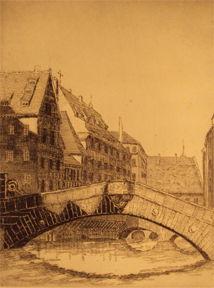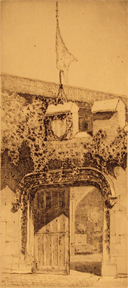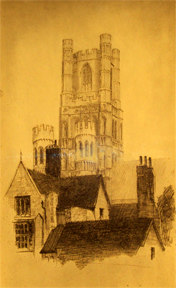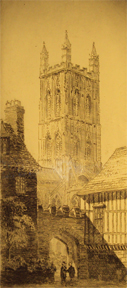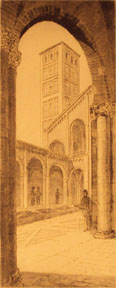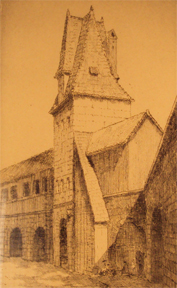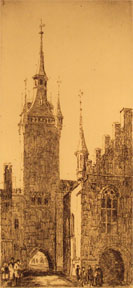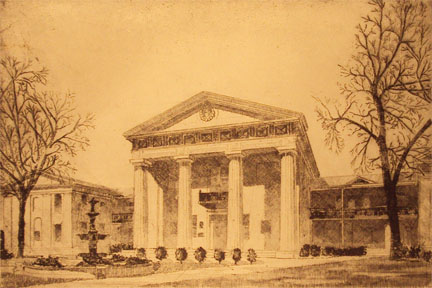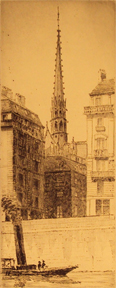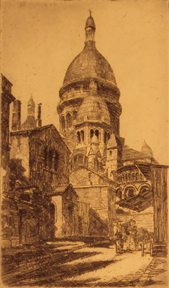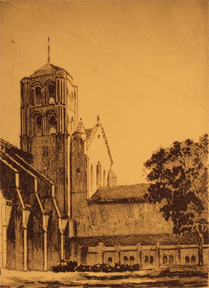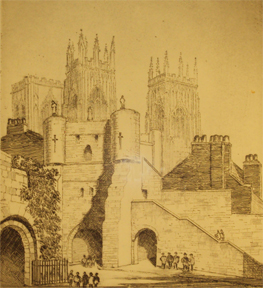George Francis Trapp: Prints from the Architect's Sketchbook
An exhibit of intaglio prints made from the artist's sketchbook of travels in Europe.
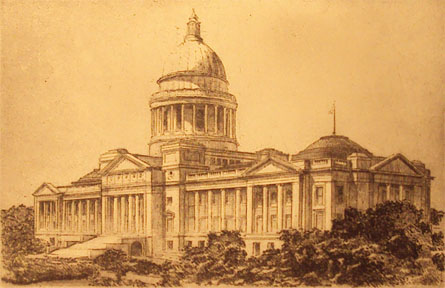
George Francis Trapp was born on March 20, 1900, in Chicago, Illinois. In 1914, the family moved to Little Rock, Arkansas. Trapp had an early interest in drawing and worked as a draftsman for Little Rock architect John Parks Almand.
Trapp studied at the University of Arkansas and received his Bachelor of Architecture degree from Columbia University in 1926. The following year, Trapp traveled to Europe. He lived in Paris and earned a diplôme from École des Beaux-Arts. Among his colleagues were Arkansas-born Edward Durrell Stone and Louis Skidmore. Trapp also studied printmaking with noted American printmaker Louis Orr. Trapp recorded his travels in France and throughout Europe with finely-crafted drawings of many of the sites he visited.
Following his time in Europe, Trapp moved to New York where he worked for Harvey Wiley Corbett, as did Edward Stone. In 1934, Trapp returned to Arkansas. As a partner in the firm Trapp, Clippard, and Phelps, Trapp was involved in the design of many significant buildings in Little Rock, including Robison Auditorium, Arkansas State Education Building, Pulaski Heights Presbyterian Church, and Hall High School.
After retirement, Trapp returned to intaglio printmaking, using the presses at the Arkansas Arts Center. Intaglio printmaking is a family of techniques where the design on the plate has been hollowed out. Trapp printed from new and older plates he made based on the drawings from his European travels. Trapp's prints were never sold; instead, they were given as gifts or donated to charities. His contributions were recognized by the Arkansas Chapter of the American Institute of Architects in 1971. He died on February 18, 1980.
The works demonstrate Trapp's controlled but expressive style. His sensitivity to light and shade reveal the drama present in each work of architecture. Although he was greatly affected by the European architecture he studied, the majority of Trapp's work fits more comfortably into a modernist idiom, with the exception of the neo-classical Robinson Auditorium.
The prints in this exhibit are taken from a collection of sixty-four works, drawings, and etchings donated to the University of Arkansas in 1983 by Trapp's widow, Linda Wiles Trapp. The works were exhibited at the University in 1983 and last exhibited in Little Rock in 1989. The works were recently added to the Special Collection's Arkansas Architectural Archive.
George Francis Trapp: Prints from the Architect's Sketchbook will be displayed in the lobby area of Mullins Library through the end of August. For more information, call 479-575-6702.
(Click thumbnail image to enlarge.)



